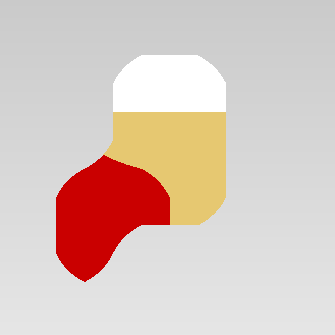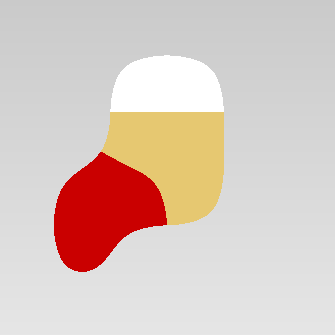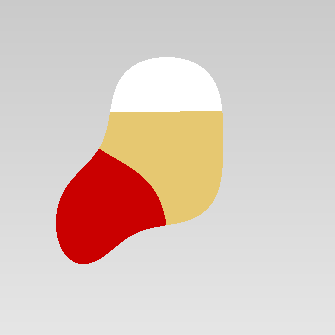Minor version published in March 2025.
Enhancements and new features included in this version:
Other changes:
Open Inventor 2025.1 includes all fixes available in Open Inventor 2024.2
Slice rendering has been improved when using the SoVolumeData::valueInterpretation in DISCRETE mode.
You now have a proper rendering with all the SoVolumeShape::interpolation modes.
See the image below an example with different modes of interpolation.
| NEAREST | LINEAR | MULTISAMPLE_12 | CUBIC |
|---|---|---|---|

| 
| 
| 
|
Introduced in version 2024.1, the light model SoLightModel::Model::PHYSICALLY_BASED benefits from several new features that can improve the lighting and the rendering quality of your scene.
The class SoVolumeRenderingPhysicalQuality becomes deprecated as these new features provide more flexibility and cover all of Open Inventor, not only VolumeViz.
Open Inventor is extended to allow you to render 2 different colors for the front and back side of any surface shape. The class SoMaterialBinding contains a new SoSFEnum field face which can be either FRONT, BACK or FRONT_AND_BACK. It controls which face the subsequent materials are bound to.
The demo depthBuffer has been updated to display 2 different colors on the front and back side of a polygon.
The time to apply a ray pick action and retreive the picked information has been optimized when it can use the GPU to process the picking. When the user selects a pixel on the render area, a slight amount of data related a small viewport around this pixel is sent to the GPU. This uses less memory and reduces the picking time.
See SoRayPickAction, SoPickStyle::GPU and SoPickStyle::method for detail.
Open Inventor C++ for Visual Studio 2022 is now built with Qt6 library instead of Qt5 (note that Open Inventor C++ is still built with Qt5 on Ubuntu). The documents Platforms of Open Inventor 2025.1 and Files to distribute are up to date.
Open Inventor Java is built and tested with JDK 21. It now requires version 2.5.0 of the JOGL third party. All JOGL jars provided in the folder $OIVJHOME/jre/lib/ext (jogl-*.jar and gluegen-*.jar) correspond to JOGL 2.5.0
Limitations:
if your application uses a renderarea of the package viewercomponents.awt.newt (based on the JOGL NewtCanvasAWT class), you must add these options to the java command when launching your application:
--add-opens java.desktop/sun.awt=ALL-UNNAMED --add-opens java.desktop/sun.awt.windows=ALL-UNNAMED --add-opens java.desktop/sun.java2d=ALL-UNNAMED
sun.awt.noerasebackground to true.The class SoVolumeRenderingPhysicalQuality is now deprecated. We suggest you use the new features described above instead.
The tool Inventor Studio is removed as of Open Inventor 2025.1. The tool IvTune allows you to edit any scene graph and provides equivalent features to Inventor Studio. Therefore, the documentation Files to distribute has been updated.
As of Open Inventor 2025.1:
In 2025.2, we plan to support this new platform:
In 2026.X, we plan to support these new platforms:
Starting from OpenInventor 2024.2.3, we have added the Flexera LmHostId application.
You can find it in the $OIVHOME/License directory. Simply execute this application to retrieve your hostID, which is necessary for activating your node-locked licenses.